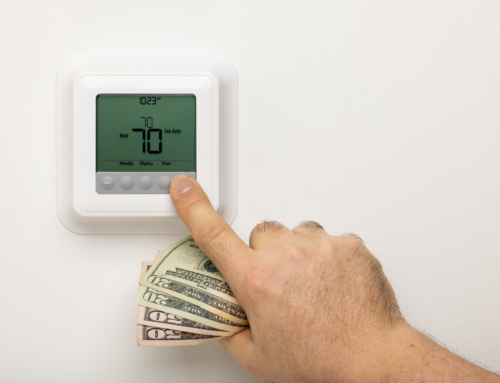The Keys to Efficient Energy in the Contra Costa Area
Energy efficiency is a heavy buzzword lately when it comes to matters of the home – and for good reason. With air quality a growing concern and energy costs rising steadily, it makes sense that homeowners want to make sure their homes are as energy efficient as possible. Three key factors in determining energy efficiency are room by room airflow, insulation, and load calculations for HVAC systems. If you’re in the market for some home energy upgrades in Solano, you’ll need to know how these three factors can play a major role in your home’s energy usage.
Load Calculations for HVAC Systems
A common problem we see in the heating and cooling industry is that many HVAC systems today are too large for the homes in which they are installed. At first, it might seem like a good idea to have a bigger system because – well, bigger is better, isn’t it? It would make sense that the bigger the system, the quicker it will bring the air to the desired temperature and the less it will have to work, right?
Wrong.
Actually, having a heating and cooling system that is too large for your home can cause quite a few problems and end up costing you much more money in the long run. For example, if you have an oversized air conditioning unit, you can expect:
- A larger cost to install the unit
- A sticky house because the unit does not run long enough to dehumidify the air
- Wide uncomfortable temperature differentials
- A shorter lifespan for the system because of how often it turns on and off.
- Longer run times not allowing the proper mixture of air for true comfort
- Higher utility bills
It is important for your home to have an appropriately sized HVAC system so you won’t have to worry about the cost of these issues – which can be extensive.
If you are on a mission to improve your home with a new HVAC system or even new insulation for energy efficiency in Contra Costa, keep in mind that having a larger-than-needed system isn’t going to help lower your energy costs and will most likely increase your out-of-pocket expenses over the next several years.
You might be wondering: How do I know what size is ideal for my home?
The most common and recommended method for determining system size is by using load calculations, which the best HVAC experts in the Bay Area will know. Insist on choosing professionals who use load calculations for their customers and not just estimates or guesswork. Load calculations ensure that the chosen system will provide the amount of heating and cooling a house actually needs. Following is more information regarding load calculation and how crucial it is for proper room by room airflow.
What are Load Calculations?
Due to the issue of improper sizes of HVAC systems, the Air Conditioning Contractors of America (ACCA) has developed the Manual J protocol to outline the calculations necessary for proper system sizing. Engineers would do these calculations in the past with slide rules and/or pen and paper. With modern computer programs today, however, it can be done more precisely, and with fewer resources and time required. At A-1 Guaranteed, we use Right-Suite Universal by Wrightsoft to make sure our calculations are accurate and provide the best results.
What Information is Needed to Do These Calculations?
Information like the home’s insulation levels, the square footage of all areas and surfaces that gain and or lose heat, orientation of the home, and more are entered accurately. The output when calculating represents how much heating and cooling the house needs when conditions demand it the most. Each room and zone in the house is registered in BTUs per hour.
How Accurate are Load Calculations?
Before Manual J load calculations, contractors had to rely on approximations, like rules of thumb, to determine the proper size of HVAC systems for homes. Calculations were based on the total square footage of the floor area, which produced a “rule of thumb” stating that areas generally use 400 to 600 square feet per ton. However, every home is different and the slightest change in variables can impact that number. The same house rotated 90 degrees, for example, could change the cooling load by 25% or more. (unfortunately, most contractors still use these rules of thumb, providing inaccurate results).
Using the Manual J load calculations, what we find is that the old 400-600 feet/ton rule is often putting in an air conditioning unit that is 2-4 times larger than needed.
In our climate area, we are averaging about 1000 to 1200 square-foot per ton when sized with Manual J.
Room by Room Airflow
One of the most critical factors that is affected by an improperly sized HVAC system is room by room airflow. The way air is brought in, flows through, and is removed from certain areas is known as room air distribution. Proper airflow is crucial to energy efficiency with HVAC systems; if you have poor airflow, your air conditioner and furnace will work harder and use more energy, reducing the lifespan of your unit.
How Proper Airflow works:
A properly installed central air conditioning system injects conditioned air blending it with room air to produce the desired temperature and humidity level. When the system is set to cool, air that is supplied is generally around 55 degrees F and is delivered through properly designed diffusers at high velocity. This velocity breaks turbulence and causes the room air to mix with the air that is supplied. This is where oversized systems miss the mark. Proper airflow dilutions requires time and velocity, two things that are not provided by a system that turns off and on frequently. The type of system used for your home will determine the overall energy efficiency of it, so choosing the correctly sized system is critical for maximum savings and comfort. If another contractor has recommended replacing your existing system with the same exact sized system, chances are that you will see very little savings on operating cost and very little change in your overall comfort.
How Insulation Affects Air Flow
Another important component of an efficient home is the thermal envelope and insulation. When you’re looking for ways to save energy and money on home climate control, insulation for energy efficiency in Contra Costa could be the first step.
It is often thought that when you’re trying to cut energy costs that large changes are necessary, like replacing all the windows, when in truth, insulation can actually have the biggest impact on energy ratings and performance. It is, by far; one of the least expensive upgrades you can invest in.
Insulation is the first line of defense when it comes to preventing unwanted and or unneeded hot or cold air from entering areas of the house. When people first think of insulation, what most often comes to mind is the “pink fluffy stuff” within the walls of our homes that keep hot air out in the summer and warm air in during the winter. Think of attic insulation as the distance between you and the uncomfortable environment that is your attic in the summer.
In reality, however; insulation includes much more than that. Sealing air leaks around recessed lights, door frames, plumbing, and even electrical boxes is also vital. A two story home often can often have large cavities that connect the attic to the center floor, these areas can contribute to a loss of energy.
You might be surprised at how much of impact insulation in these little areas makes. In fact, up to 30% of a home’s energy loss can be attributed to air leaks.
The ABC’s of Insulation
Think of it this way: the most important is A for Attic, B for Below (under the house) and C for Center (walls). If you’re interested in adding insulation to your home, the basics of thermal science is that heat rises so you may want to start with the attic; it’s the most beneficial place to add insulation and will deliver the most “bang for your buck.” It is important to have your insulation looked at by someone who understands how the insulation is interacting with the HVAC and the duct system. Many people today choose to use blow-in insulation because it’s quick to install, easy to place, and can get in between even the trickiest nooks and crannies.
The Time is Now for Energy Efficiency
Being conscientious about energy efficiency is more important than ever. There is a lot to keep in mind when thinking about home energy upgrades in Solano, and it can seem confusing to try to get everything in line for maximum energy efficiency. At A-1 Guaranteed, our team is dedicated to helping you find the perfect solution for your energy efficiency project, from the appropriate size air conditioner to the best insulation for your needs.
Our experts can also perform an *energy audit to give you detailed recommendations for actionable solutions that will maximize your home’s energy efficiency.
Contact us today for more information on energy audits, insulation, load calculations, or room-by-room airflow. Get a free no-obligation quote and take the first step to an energy-efficient, healthy home today.
*energy audits may incur a fee






